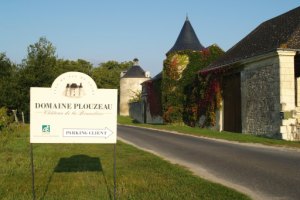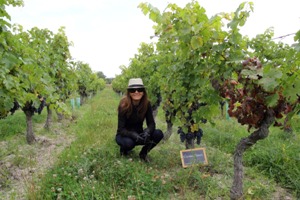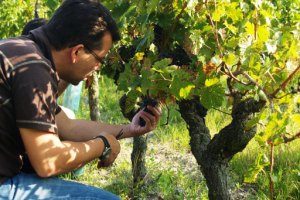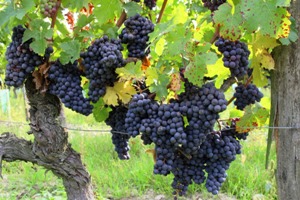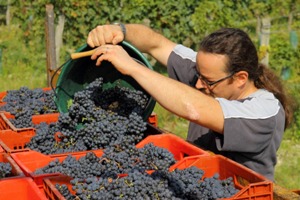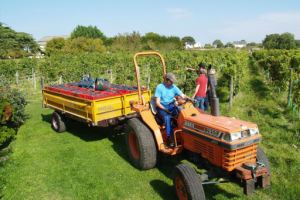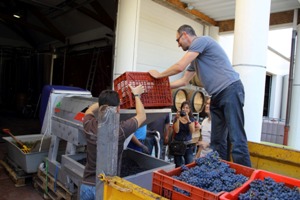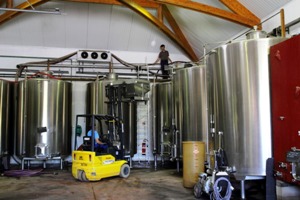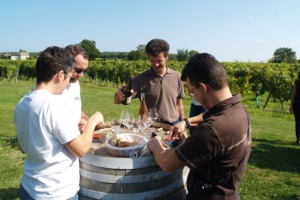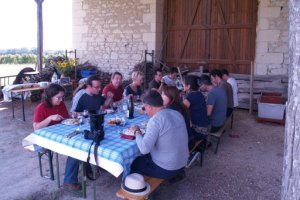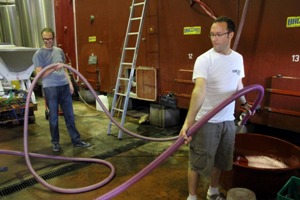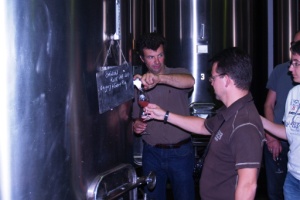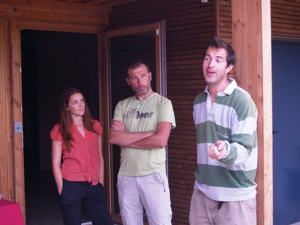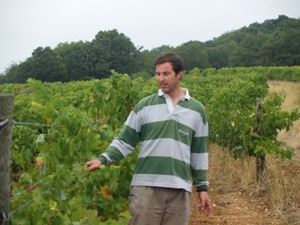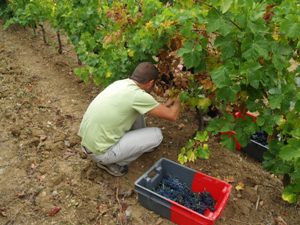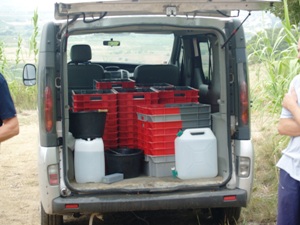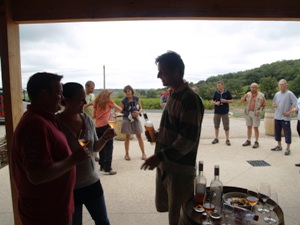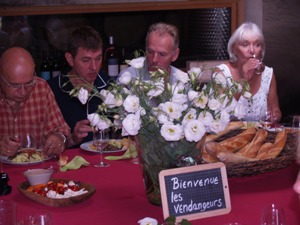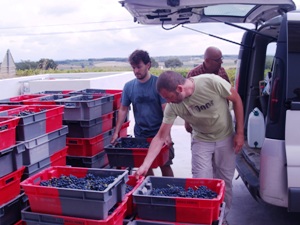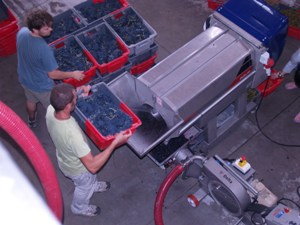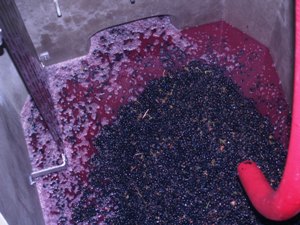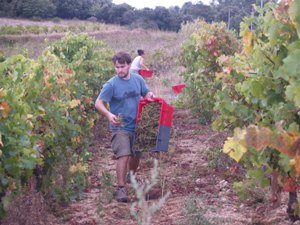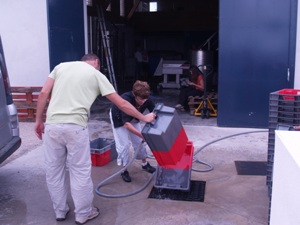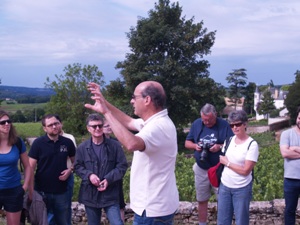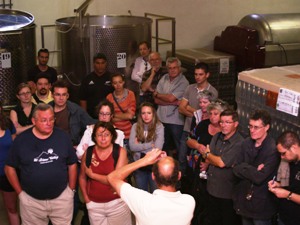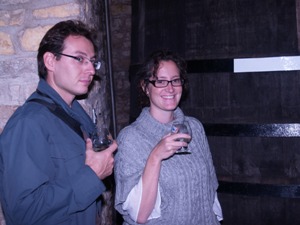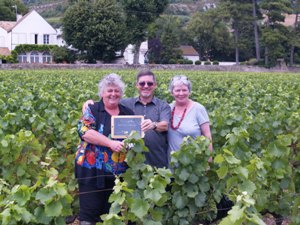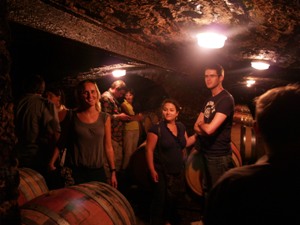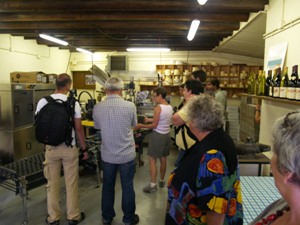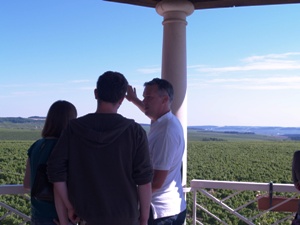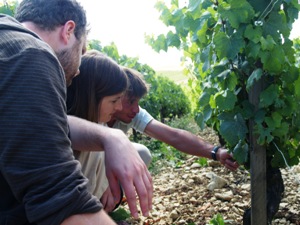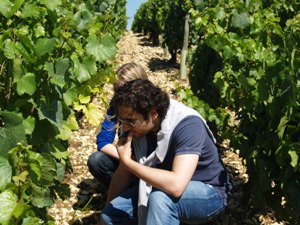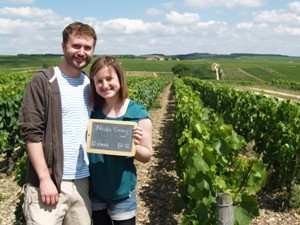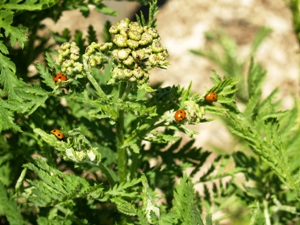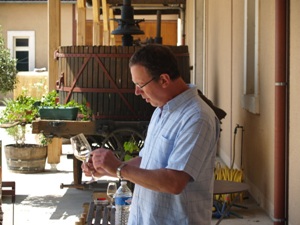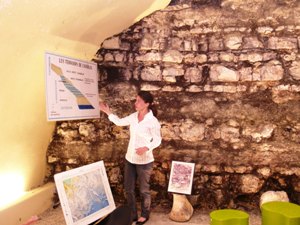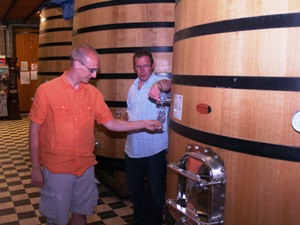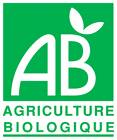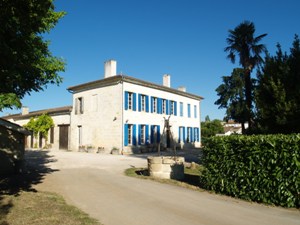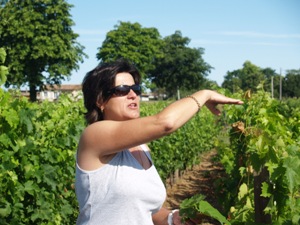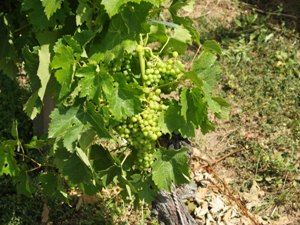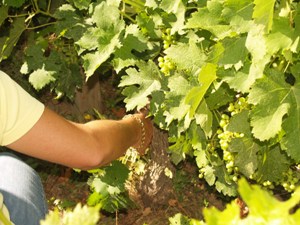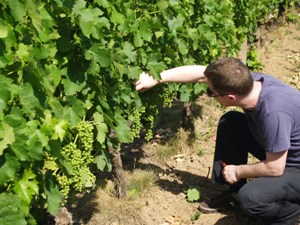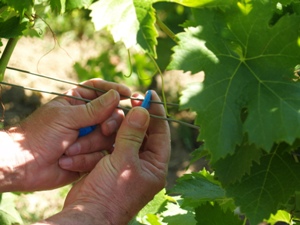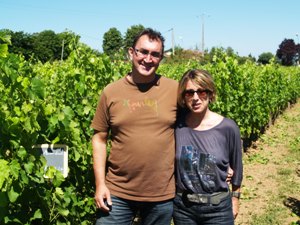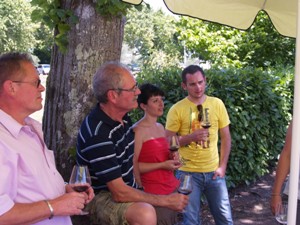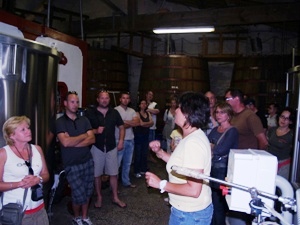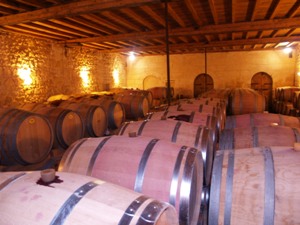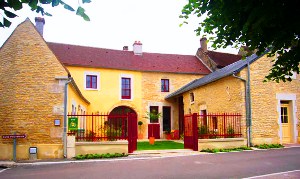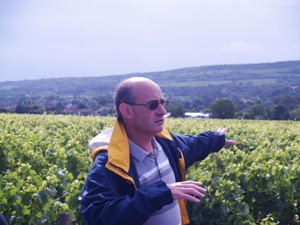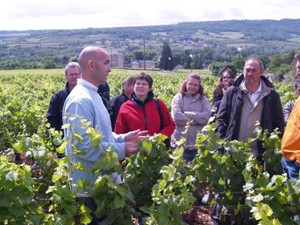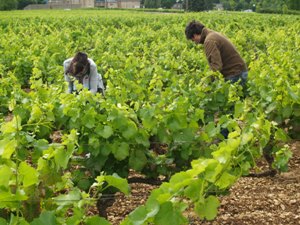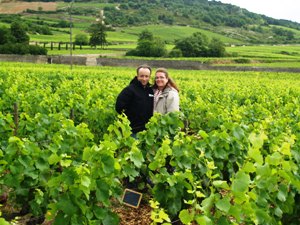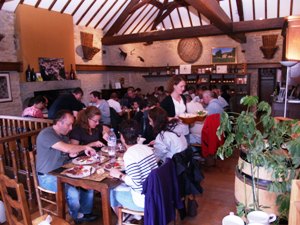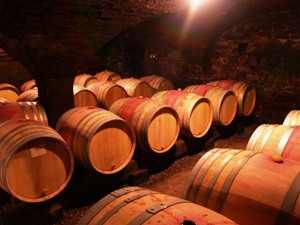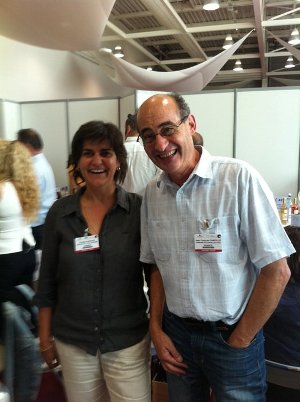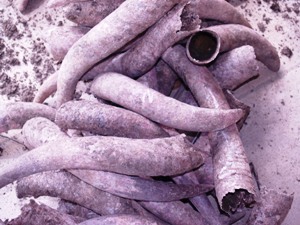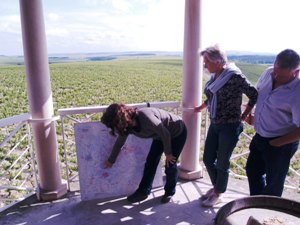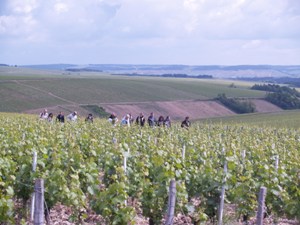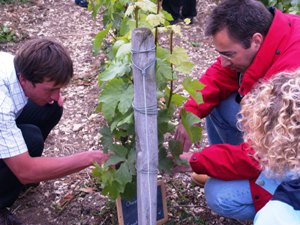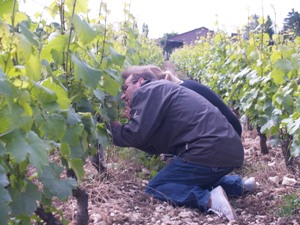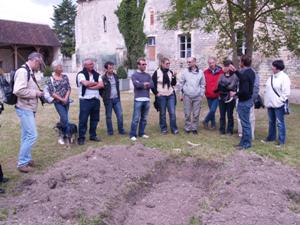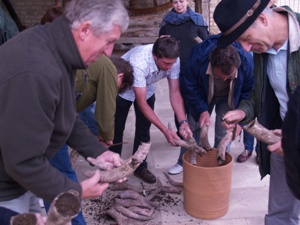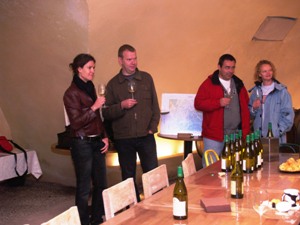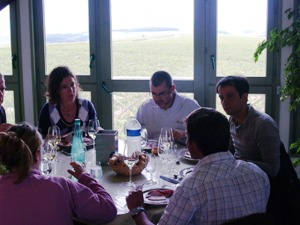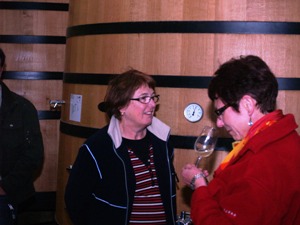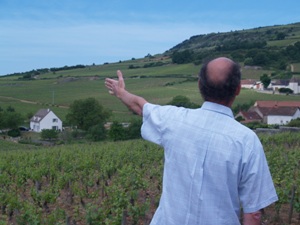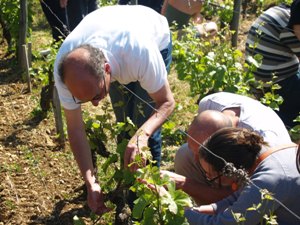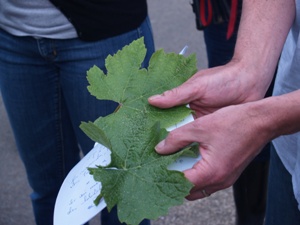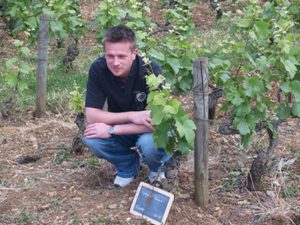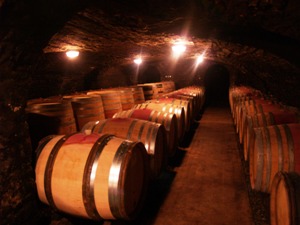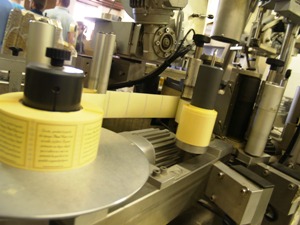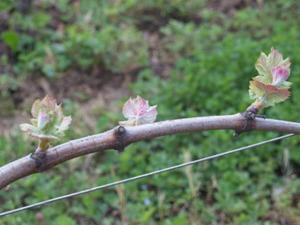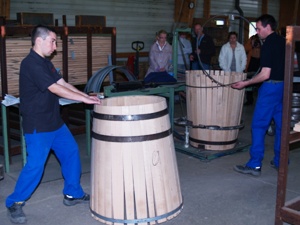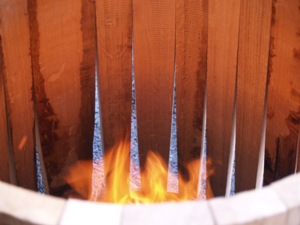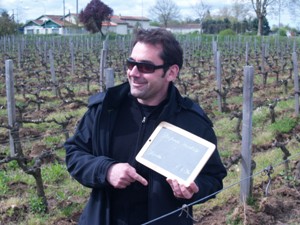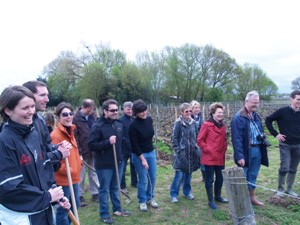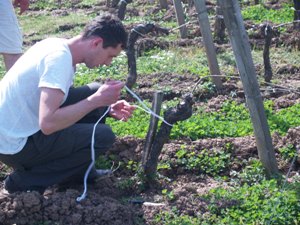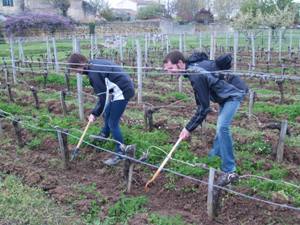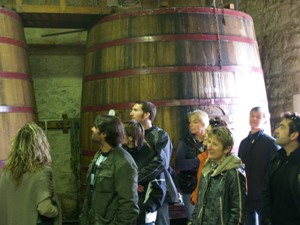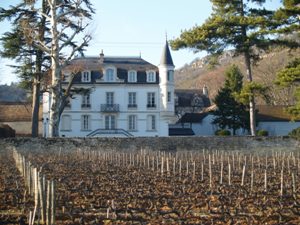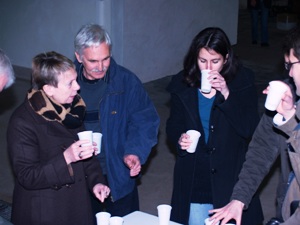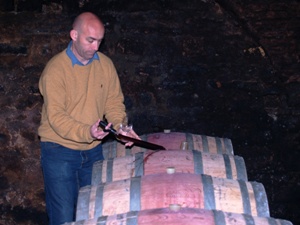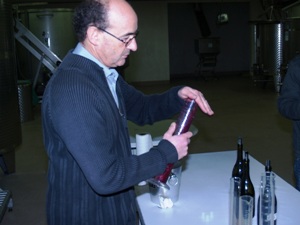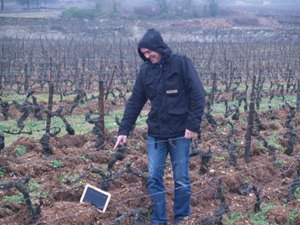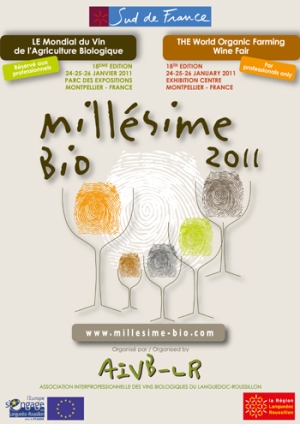Last weekend we completed our tour for 2011 of the Harvest Experience Days for each of our partner vineyards at Château Beau Rivage in Macau-en-Médoc. A turquoise blue sky and warm welcome were waiting for us.
The Gourmet Odyssey Wine Experience clients gathered around a cup of coffee at the start of the morning. For some, it was the second time they had visited the estate, having already participated in the Wine Discovery Experience Day, for others it was their very first time. We therefore started the proceedings with an introduction by Christine Nadalié, the owner and winemaker at Château Beau Rivage.
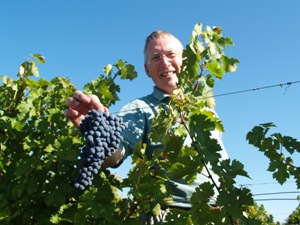
Then out into the vineyard we headed! We walked to the vineyard plot where the rows of adopt-a-vines are located. A small sign, personalised with the name of each client, indicated the position of their vines. There was time to take a few pictures next to the vines which had produced the precious grapes for the 2011 vintage, before getting down to some real work!
Having received our instructions from Christine, we spread out amongst the vine rows, secateurs in hand to start the harvest. It was the last few days of this year's harvest at the domaine, and some of the grapes were showing signs of botrytis which had settled during the wet days at the start of September, so we had to do some sorting in-situ. The healthy grapes were very ripe and oh so sweet - a real treat for our taste buds!
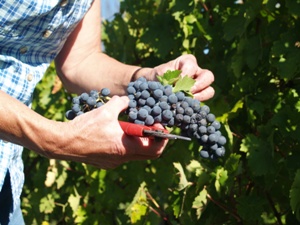
We tried two different harvesting methods on the Saturday and Sunday. On Saturday we used a team of porters with baskets strapped to their backs. Each time the harvesters had filled their buckets, they cried out "Porter" and emptied the grapes into the porter's basket.
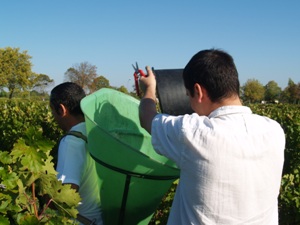
The porters then carried the grapes to the trailer, and emptied them over their heads. With the weight of the fully laden basket and whilst balancing on a ladder, they had to keep their equilibrium!
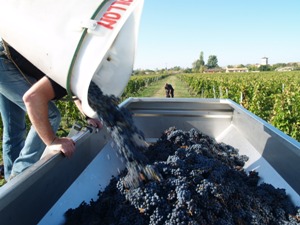
On Sunday we harvested using plastic crates instead of buckets, which is gentler on the grapes. Instead of carrying baskets on their backs, the porters wore a frame that the crates could be loaded onto to take to the van and trailer waiting nearby. Christine wanted to test this method because the grapes are less crushed by the weight of the other bunches.
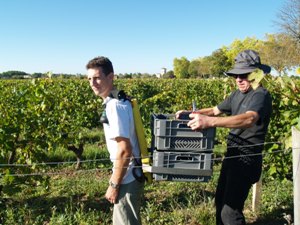
Following the grapes on their journey, we arrived at the sorting table. Once the stems had been separated from the grapes, the berries move along the conveyor belt, giving us a final opportunity to remove any unripe or bad grapes before they enter the fermentation tank.
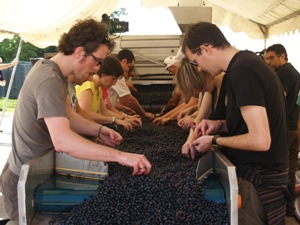
All that activity added up to good morning's work, so the chilled rosé was most welcome!
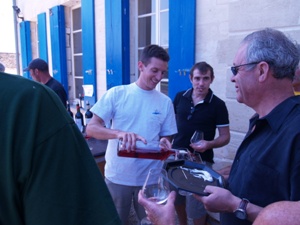
During the harvesters meal, we tasted some of the estate's other wines, starting with the "Raphaël" Bordeaux Supérieur red wine. We then tasted the "Silvio" and the "Clementine" before the "Château Beau Rivage" 2007, which is the wine chosen for the Gourmet Odyssey clients. We finished the wine tasting with "Le Phare", a blend of Merlot, Petit Verdot and Malbec which has been aged in 100% new oak barrels for two years, and Christine's "Clos la Bohème" Haut-Médoc red wine.
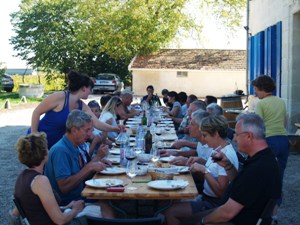
In the afternoon, we headed to the fermentation hall and the barrel room to complete the journey of our grapes! Christine explained how the sugar from the fruit will be transformed into alcohol during the fermentation process.
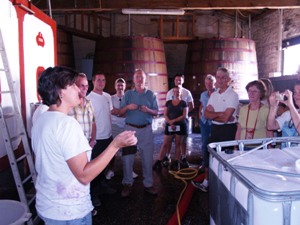
With the help of a mustimètre, Christine measured the density of the juice from the grapes that we had just harvested. This measure allows us to know the level of sugar in the liquid and gives a good indication of the potential alcoholic volume of the resulting wine - in this case 14.5%.
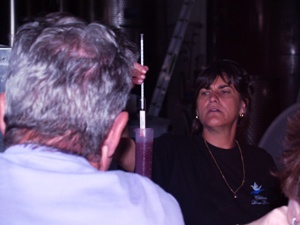
In the barrel room we saw where the 2011 wines will be aged, and where some of the 2009s and the 2010s are still resting. With her cooper's expertise, Christine taught us about the role of oak in the making of her wines.
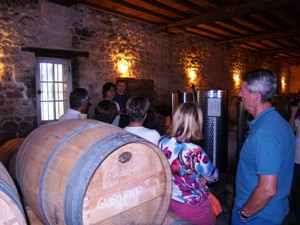
To end the day, one last tasting of the fruit of our labour, the grape juice that we had harvested over the weekend. The verdict, a very sweet juice! The mustimètre hadn't been lying!
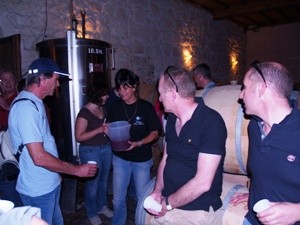
All that remains is to patiently await the ageing and blending of our wine...



